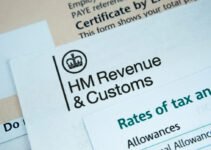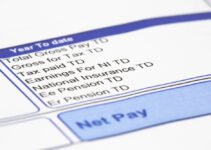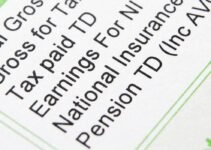Understanding UK Tax Codes in 2025: What the Different Letters Mean
A tax code is a unique identifier assigned to every individual taxpayer in the United Kingdom, serving a crucial role in the income tax system. It is a series of letters and numbers that informs employers and pension providers about the amount of tax that should be deducted from an individual’s income, whether that is from salary, wages, or pension payments.
- The Structure of UK Tax Codes
- Tax Code Letters and Their Meanings
- How to Check and Change Your Tax Code
The purpose of a tax code is primarily to facilitate an efficient tax collection process. By providing employers with the necessary information through the tax code, HM Revenue and Customs (HMRC) ensures that individuals are taxed according to their specific financial situation. This could include considerations such as personal allowances, benefits from an employer, or payments received from pensions. Furthermore, the code adjusts automatically in response to changes in an individual’s financial circumstances, allowing for dynamic and accurate tax deductions over time.
Understanding what your code means is essential for both employees and employers. For employees, a tax code can determine whether they are paying too much or too little tax, which could have significant financial implications. For employers, correctly applying tax codes is essential for compliance with tax regulations and ensuring that employees are compensated fairly according to their net pay. It is important to regularly check one’s code to ensure its accuracy, as inaccuracies can lead to unexpected tax charges or refunds. By grasping the implications of the code, taxpayers can better manage their financial responsibilities within the UK’s tax system.
The Structure of UK Tax Codes
The structure of UK tax codes is an essential aspect of understanding what your tax code means, especially in 2025. Each tax code consists of a combination of letters and numbers that serve distinct purposes. The numerical segment of a tax code typically signifies the amount of tax-free personal allowance an individual is entitled to for a given tax year. This amount can fluctuate annually based on government regulations and fiscal policies.
For example, if an individual’s tax code is ‘1257L’, the ‘1257’ part indicates their tax-free allowance, which would mean they can earn up to £12,570 before they start paying income tax. This system aims to provide clarity on the extent of personal earnings that are exempt from taxation. The letter that follows indicates specific tax statuses that affect an individual’s tax liability.
The letter component of a tax code carries significant weight in conveying various categories such as marital status or employment class. The letter ‘L’ signifies that the individual is entitled to the standard tax-free allowance, while other letters, such as ‘M’ or ‘N’, indicate certain tax responsibilities that may arise from marriage or partnership. For self-employed individuals, different letters like ‘S’ or ‘Y’ are assigned, reflecting their unique tax positions. Understanding these letter assignments is crucial in deciphering what your tax code means.
Over time, the structure of UK tax codes has adapted to reflect changing taxation policies and social circumstances. The adjustment of these codes not only simplifies the process of taxation but also allows for a more efficient allocation of tax burdens among various demographics. As we approach 2025, familiarity with this structural evolution becomes increasingly important in navigating personal tax responsibilities.
Common Tax Code Letters and Their Meanings
In the UK, tax codes are comprised of letters and numbers that dictate how much tax an individual should pay based on their earnings and circumstances. Understanding what your code means can help you manage your finances effectively. Each tax code letter denotes specific aspects of an individual’s tax situation, primarily relating to their personal allowances and deductions.
One of the most common letters encountered is ‘L’. This letter denotes that the taxpayer is entitled to the basic personal allowance, meaning they can earn a certain amount of income before tax is applied. For the tax year 2025, this could indicate eligibility for a standard tax relief, fitting for many employees in the workforce.
Similarly, the letters ‘M’ and ‘N’ represent individuals who are applying for the Marriage Allowance. Specifically, ‘M’ is designated for those who are transferring their personal allowance to their partner, while ‘N’ is for the partner receiving the allowance. This can significantly affect tax calculations and reduce the overall tax burden for couples.
The letter ‘T’ signifies that there may be additional information necessary for calculating the tax owed. This could include instances where the taxpayer has various sources of income that require adjustments or if there are any complications surrounding relief claims. A ‘T’ code often prompts taxpayers to review their circumstances closely, to ensure the right amount of tax is being paid.
Other letters, such as ‘K’, indicate that the individual has income that exceeds their allowance and thus requires a larger portion of their earnings to be taxed. Understanding these letters can illuminate what your tax code means and assist in fiscal planning, ensuring that taxpayers are aware of how nuances in their circumstances impact their obligations in 2025.
How to Check and Change Your Tax Code
Understanding what your code means is essential for effective financial management. In the UK, taxpayers can verify their current tax code through various resources. The most accessible method is to check a payslip or a P60 document, where the code will be clearly indicated. Additionally, individuals can access their tax information through the HM Revenue and Customs (HMRC) official website or by contacting their tax office directly.
If you suspect that your tax code may be incorrect, it is crucial to take action promptly. A change in personal circumstances, such as getting married, changing employment status, or acquiring additional income sources, may necessitate an update to your code. To request a change, you can inform HMRC using the online services available, or by completing a paper form. Make sure to provide relevant details about your situation, as this will assist in determining the appropriate code for your circumstances.
Keeping your tax code updated is of utmost importance; failure to do so can lead to either overpaying or underpaying tax. An incorrect tax code may result in higher deductions from your income, impacting your financial stability. Conversely, receiving insufficient deductions can create future tax liabilities. Regularly reviewing your tax code and promptly addressing any errors will help ensure that you are taxed correctly according to your specific circumstances.
Being proactive about understanding and managing what your tax code means for you can ultimately lead to more informed financial decisions. Always ensure that you are aware of your current tax code and take the necessary steps to amend it when life circumstances change.




